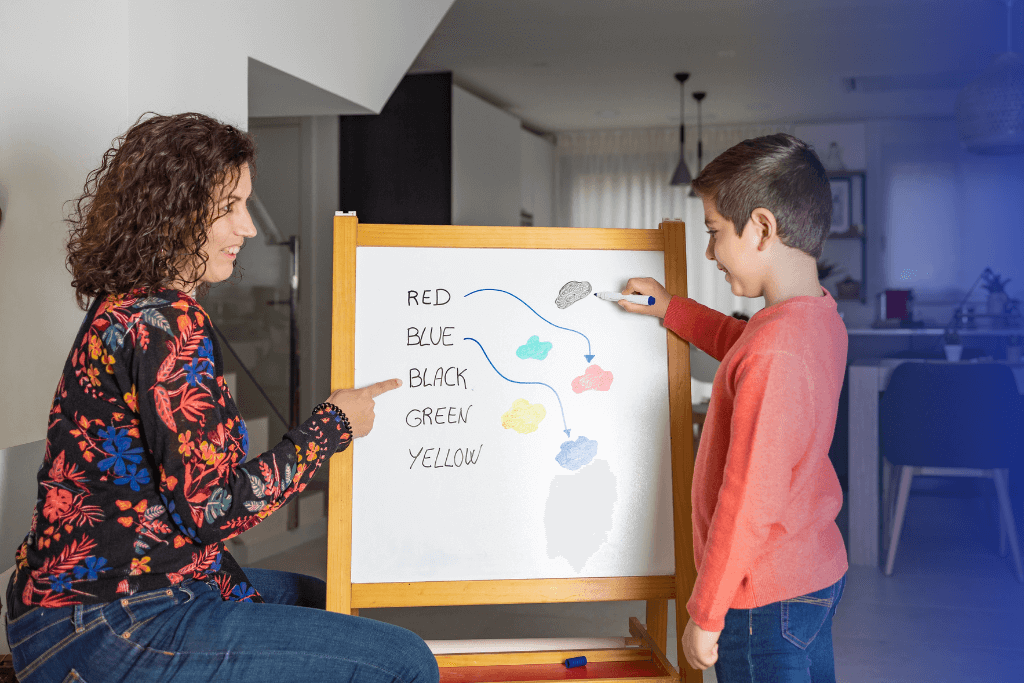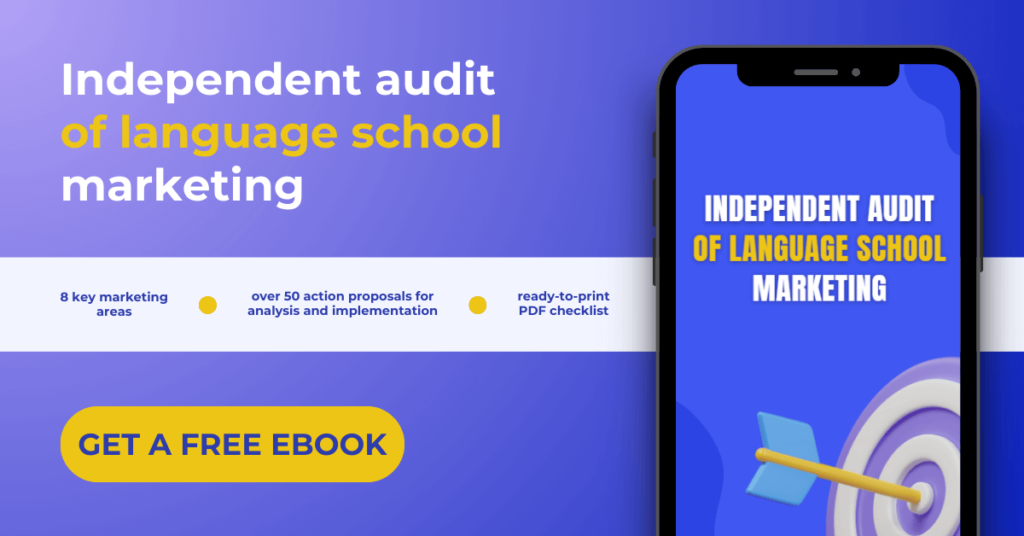
The modern educational market is full of challenges. Language schools compete for the attention of students who encounter thousands of messages every day on the Internet, social media or on street banners. In this clamor, it’s much harder to break through with information about a new offer or promotion. To make it easier to reach the audience (whether it’s a potential student or someone already enrolled), it’s worth paying attention to the concept of „plain language.”
What will you find in this article?
- What is plain language?
- Why does it matter in a language school?
- Benefits of using plain language in a language school
- How to implement plain language in a language school?
- Summary
What is plain language?
Plain language is an approach that allows us to communicate in a clear, transparent, and understandable manner for most people – including the elderly, foreigners learning English, or simply busy clients who want to quickly understand what you have to offer.
Plain language relies on short sentences, simple vocabulary, and logical structure. It avoids unnecessary jargon, passive voice, or lengthy introductions like „We kindly inform you that…”. It should sound like we usually talk to another person – specific, with a clear purpose, and without barriers in the form of convoluted constructions. The goal is to facilitate the recipient’s understanding of the message, not to minimize the content to mere generalities.
Plain language vs. „easy language”
Sometimes, we also talk about the so-called easy-to-read language (ETR – easy to read), which is aimed at individuals with greater communication needs, such as seniors, people with disabilities, or those just learning the language. While plain language can help most of your students, „easy language” is a special form of communication that is even more simplified, usually used in materials dedicated to a specific group of recipients.
Why does it matter in a language school?
Marketing and promotion
If your offer is presented in a complicated way, potential students may simply stop reading and… look for another school.
In accessible, understandable messages, it’s easier to showcase the real benefits of learning at your institution, such as achieving language fluency in a shorter time or offering a flexible schedule. To this end, it’s worthwhile to use case studies, as students can share their experiences, feelings, and results achieved by learning at your school in their own words.
Communication with students
It’s not just about promotional texts, but also about daily announcements, emails, regulations, or even social media posts. Rules for using the e-journal? Change of class schedule? Information about a language trip? Each of these communications is easier to implement and understand if you use clear, accessible language.
Building relationships and trust
An overly formal tone or excessive use of specialized vocabulary can create a distance between you and the students. Friendly, simple language makes recipients feel more comfortable when interacting with the school. They are more likely to ask questions and share their opinions, which in turn allows you to develop and improve your offerings.
If you want to learn more about this topic, check out our other article, NPS: how to survey customer satisfaction with a single indicator.
Benefits of using plain language in a language school
- Faster information transfer – with understandable messages, students don’t have to ask for details.
- Better recruitment results – potential students make decisions faster when they clearly understand the course participation rules, price, or format.
- Attracting diverse age groups – simple language helps reach both high school students and seniors who want to, for example, refresh their English before traveling abroad.
- Standing out from the competition – in the educational industry, institutions that effectively communicate the advantages of their courses in an accessible and appealing way are increasingly winning.
How to implement plain language in a language school?
- Simplify messages – remove unnecessary introductions like “We would kindly like to inform you…” and replace them with a brief introduction: “We inform you that…”.
- Use clear sentence structures – avoid industry jargon (unless dealing with advanced methodologies) and lengthy complex sentences.
- Text structure – paragraphs, headings, bullet points. These help quickly locate key information such as course pricing, enrollment deadlines, or educational materials.
- Adapt language to the audience – you’ll write differently to a middle school student just beginning their learning journey than to adult students preparing for a professional exam.
- Show specific benefits – instead of dwelling on the school’s history, focus on what students will truly gain from the classes (e.g., confidence in workplace communication, the opportunity to exchange experiences with native speakers, a certificate at the end of the course).
Want to stay one step ahead of the competition? Download our free e-book and see how to make your marketing really work!

Summary – how does plain language help in communication and marketing in a language school?
Simple language is not about „diluting the message.” On the contrary – it demonstrates a professional approach to the client. In a language school – where communication is the foundation of relationships with students at every stage of learning – clear and transparent content helps build trust and engage a wide audience of students.
As a result, you gain not only better recruitment outcomes but also increased satisfaction among those who are already learning a language at your school. When you use simple language, you create a more welcoming and open school that better meets the needs of students.
Now you know why it’s worth using simple language in communication! A great complement to today’s post is our article „Storytelling: how to tell the story of a language course?” from which you’ll learn how to create engaging content that captures the audience’s attention.
